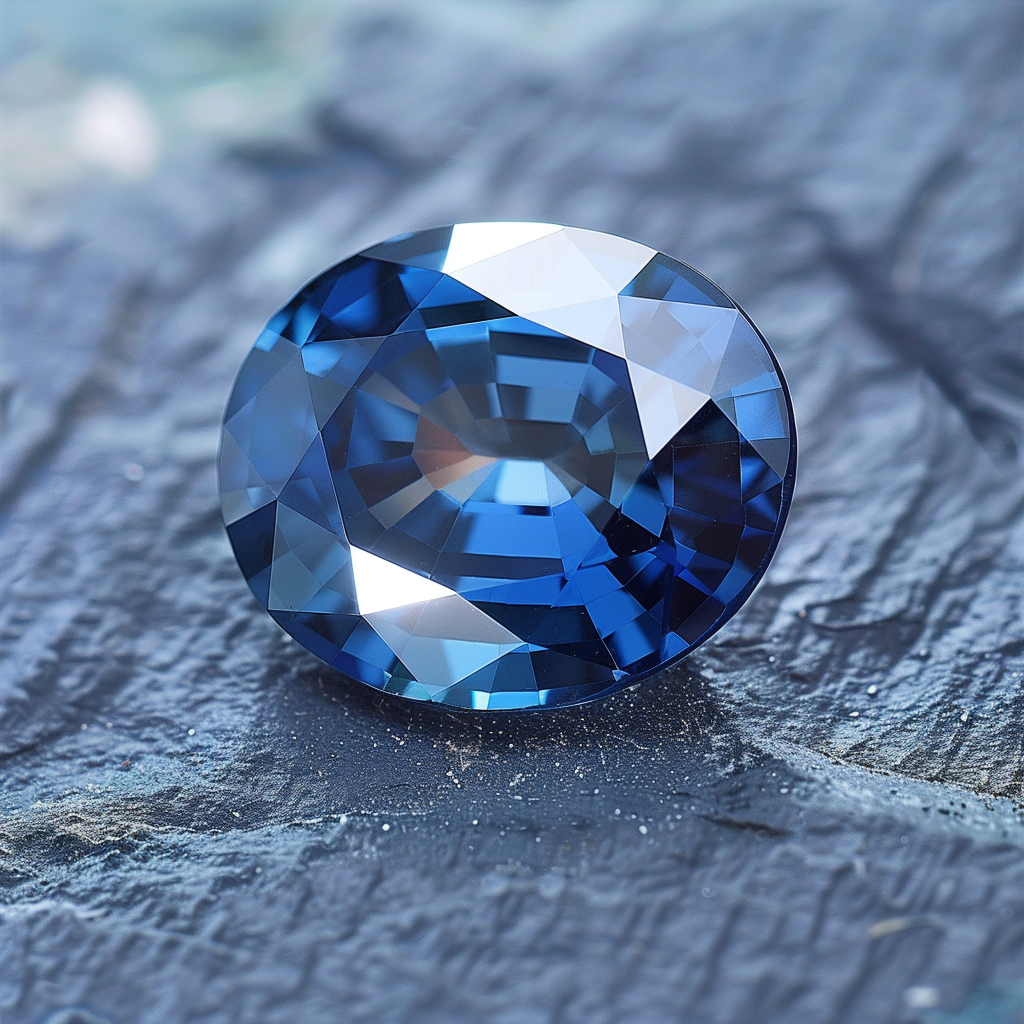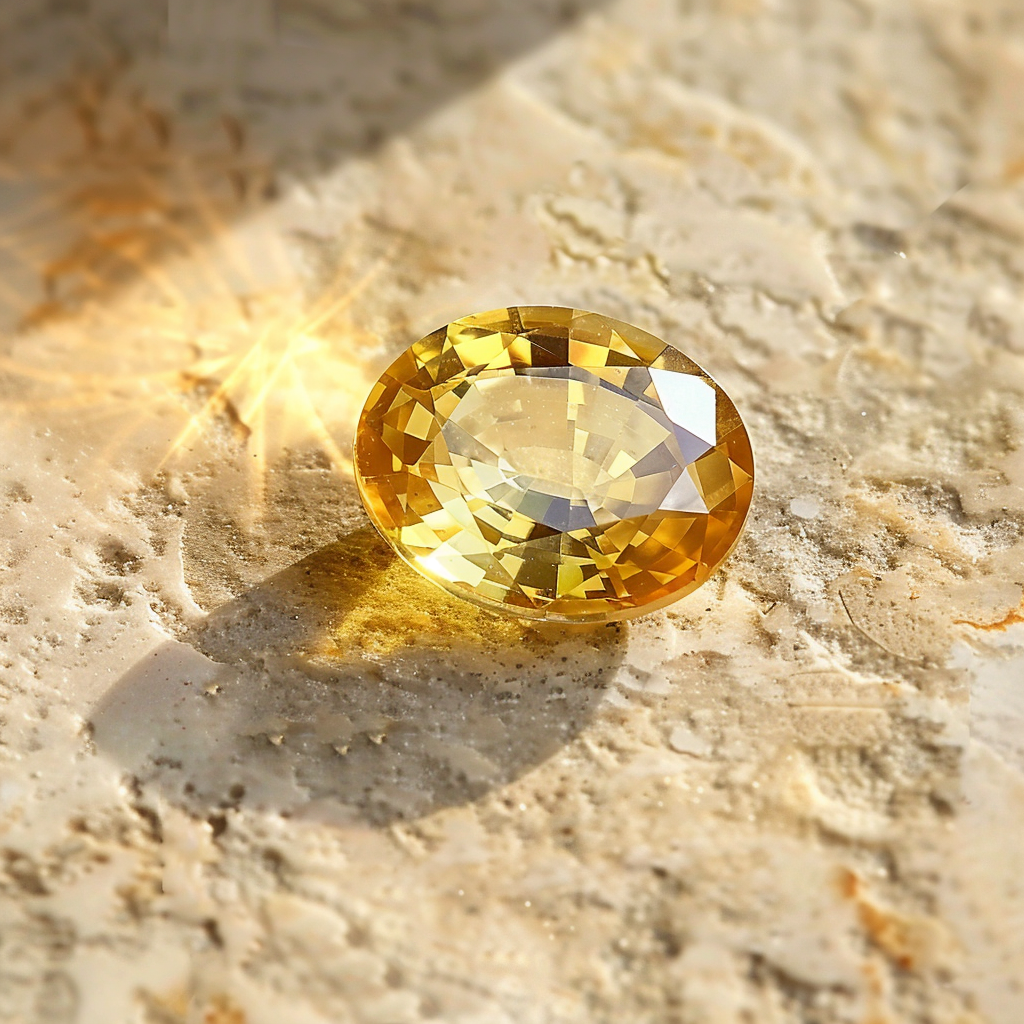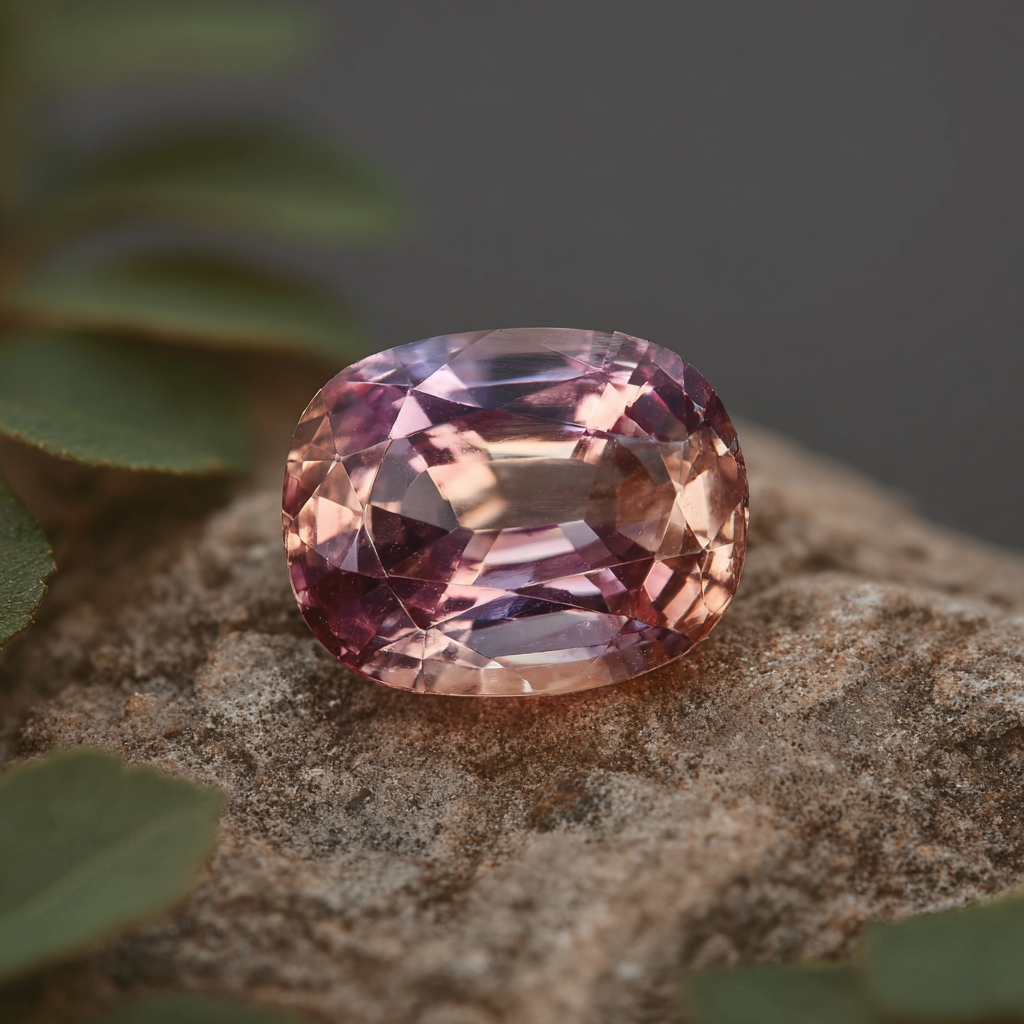Ceylon, Defined
The island of light
What makes Sri Lankan sapphires special — a sunlit spectrum of color, yield-savvy cutting, and a 2,000-year story still told by hand.
Shop Ceylon Sapphires1) Spectrum of color
- Blue sapphire Pastel → Royal
- Sri Lanka’s classic blues are metamorphic in origin, which typically means lower iron content than basalt-related sources and a brighter, “open” appearance in daylight. Labs often see different trace-element fingerprints and UV-Vis responses when comparing Sri Lankan metamorphic material to high-iron basaltic sapphires from Australia/Thailand, though there’s overlap; origin work uses a combination of chemical and spectroscopic tools rather than a single test.¹
- Padparadscha Lotus-hued
- Defined in the trade as a delicate mix of pink and orange—think lotus blossom at sundown—padparadscha is both rare and debated. GIA notes the term derives from Sanskrit for lotus color and places the range at light-to-medium pinkish-orange/orange-pink. Historical papers show long-standing arguments about boundaries (too brown/orange or too pink?), and whether the term should be restricted to Sri Lankan stones; reputable labs now judge case-by-case, emphasizing even, naturally caused bodycolor rather than pleochroic tricks.² ³ ⁴
- Yellow sapphire Lemon → Gold
- The “Ceylon yellow” look comes largely from the Fe³⁺ family of chromophores in low-iron corundum. Recent peer-reviewed work (Emmett et al., 2023) shows many Sri Lankan yellows are colored by a trapped-hole/Fe³⁺ mechanism that yields luminous lemon-to-gold hues; high-iron, basalt-hosted sapphires elsewhere may involve additional Fe³⁺ contributions and can read denser. Heat can tweak these centers, so disclosure matters.⁵ ⁶
- Star sapphire Asterism
- The six-rayed star is a “light-on-silk” effect—reflections from dense, needle-like inclusions (typically rutile) aligned in three directions intersecting at 60°. Quality depends on crisp, centered rays over a saturated bodycolor; 12-ray stars occur when two inclusion sets overlap (e.g., rutile + hematite). Heat that dissolves silk can diminish the star.⁷ ⁸
2) Cutting style
- Mixed cuts that breathe. Sri Lankan cutters favor brilliant crowns (for sparkle) over step-cut pavilions (to support color). You’ll see ovals and cushions with triangular/kite crown facets and rectilinear pavilion facets—classic “mixed” architecture for corundum.⁹
- Orienting color & pleochroism. In many Sri Lankan crystals the strongest blue is near the surface; orienting the culet into the concentrated color zone can make the face-up look evenly blue. Cutters also bias orientation to the violetish-blue pleochroic direction (rather than greenish-blue) for a richer look.⁹
- Avoiding windows & extinction. Too shallow a pavilion “windows” (see-through center); too deep a pavilion can over-darken. Good Ceylon cutting walks the line—enough crown height and pavilion depth for light return, without sacrificing weight or that airy brightness Sri Lankan stones are loved for.⁹
3) Mining & history
- Artisanal pit mining. The National Gem & Jewellery Authority (NGJA) oversees licensing. In 2013, Sri Lanka issued ~6,565 mining licenses; over 6,000 were for traditional pit operations, with only ~10 mechanized licenses under strict guidelines—illustrating how small-scale methods dominate.¹⁰
- Illam: the gem gravel. Sri Lankan gems are mostly recovered from secondary alluvial gravels called illam. Teams hoist baskets of illam from hand-dug shafts, then wash and concentrate the heavy minerals to pick sapphire and other gems—a method documented in gemological literature for decades.¹¹
- Field belts & towns. Names like Ratnapura (“City of Gems”) and Elahera are shorthand for productive belts where sapphire, chrysoberyl, spinel and more occur together in placers. The industry remains a dense cottage network of miners, brokers and cutters rather than a few open-pit giants.¹² ¹³
4) Icons of Ceylon
- The Logan Sapphire (423 ct). One of the world’s largest faceted blue sapphires, mined in Sri Lanka, mounted as a brooch with 20 colorless round diamonds; part of the Smithsonian’s National Gem Collection.¹⁴ ¹⁵
- Blue Belle of Asia (392.52 ct). A cushion-cut Ceylon blue that set a world auction record for a sapphire at Christie’s Geneva (11 Nov 2014) at CHF 16,965,000 (~US $17.3 million).¹⁶ ¹⁷
These stones anchor the modern meaning of “Ceylon”: brightness, balance, and enduring desirability at the highest levels.
5) How to choose
- Color first. For blue, look for even saturation that stays lively in soft light; avoid gray masks. For padparadscha, seek a balanced pink-orange body (not brownish or purely pink/orange), with color caused by chemistry, not pleochroic trickery.² ³ ⁴ ⁹
- Cut that flatters. Mixed cuts with confident crowns make Sri Lankan stones read “lit from within.” Check for windowing (too shallow) or dead areas (too deep).⁹
- Treatment & origin disclosure. Heating is common and stable when disclosed; unheated stones in fine color are rarer and priced accordingly. Major labs (GIA, SSEF, AGL, Gübelin) combine microscopy, spectroscopy and trace-element chemistry for treatment/origin opinions; metamorphic vs basaltic signatures can aid origin calls, but no single marker is definitive.¹ ⁹
- Yellow specifics. If you love Ceylon yellows, ask whether the color is consistent with low-iron Fe³⁺/trapped hole mechanisms (typical of Sri Lankan material) and whether any heating or beryllium diffusion is present.⁵ ⁶
- Stars that sing. For star sapphires, look for a centered, sharp six-ray star that moves smoothly across a symmetrical, higher dome cabochon; too much silk lowers transparency and color.⁷ ⁹
At-a-glance
- Origin: Sri Lanka (Ceylon), primarily metamorphic placers
- Colors: Pastel–royal blue, padparadscha (pink-orange), lemon→gold yellow, star stones
- Cut styles: Mixed brilliant/step; cabochon for stars
- Disclosure: Ask for lab memos on significant stones; note treatment & origin
6) Shop Ceylon sapphires








